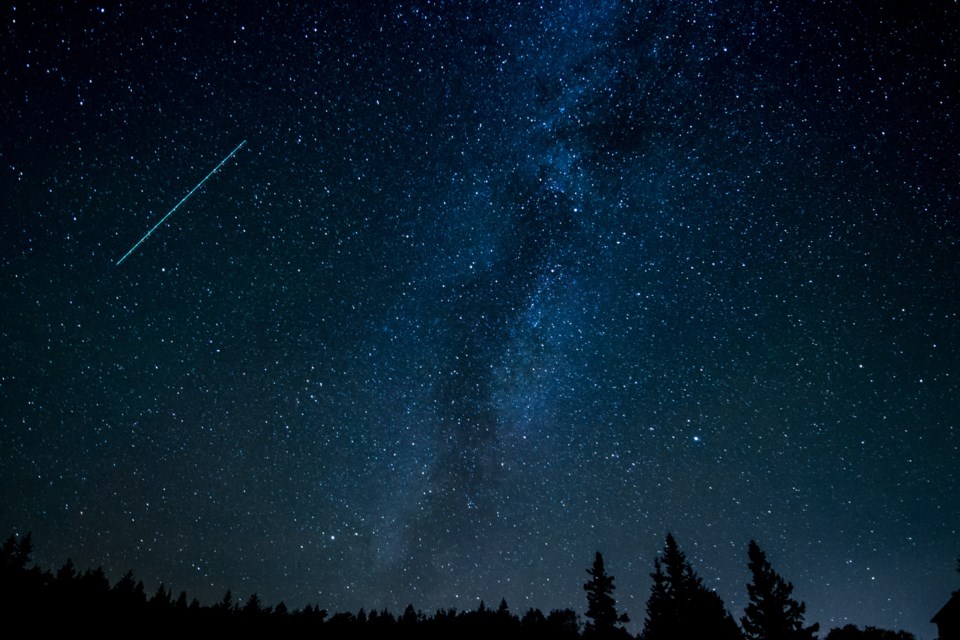Meteorite hunters won’t have a field day in the Orillia area, but people may have seen something streaking through the air on the weekend.
Western University’s physics and astronomy department says a bright fireball was observed by a network of all-sky cameras across southern Ontario at 11:37 p.m., Sunday.
But analysis of video data suggests the meteor’s fragments likely only found ground near the eastern shore of Lake Simcoe, just north of the town of Argyle.
“Small meteorites might be found as far south as Argyle, but the fall region is quite compact,” Dr. Peter Brown, a Canada Research chair in planetary small bodies, explained by e-mail Tuesday. “(It) definitely does not extend to Barrie or Orillia.”
Barrie and Orillia residents could have seen or heard the fireball Sunday night, however, so it was a significant event nonetheless.
“The initial mass is believed to have been around 10 kilograms and we would expect tens to hundreds of grams of material on the ground,” Denis Vida, who specializes in the study of meteors at Western, said in a news release from the school in London, Ont.
“This fireball was particularly significant because it was moving slowly, was on an asteroidal orbit and ended very low in the atmosphere. These are all good indicators that material survived,” added Vida, an astronomy postdoctoral associate.
The fireball was still producing light at an altitude of 29 kilometres. Another factor which strongly favours survival of meteorites includes the very steep entry angle — about 30 degrees from the vertical.
“Taken together, these factors suggest many small meteorites have made it to the ground,” Vida said.
For those hunting meteorites, they can be recognized by their dark, often scalloped exterior. Usually they will be denser than a ‘normal’ rock and will often be attracted to a magnet due to their metal content.
Sunday’s event is also important because Western’s meteor research group has good-quality video data of its passage through the atmosphere, so the rock’s origin in this system can be calculated. Preliminary results indicate that the fireball first became visible at an altitude of 90 km and travelled almost due north.
Western’s physics and astronomy department runs an all-sky camera network that constantly monitors the sky for meteors. Vida confirmed that more than a dozen all-sky cameras in Western’s Southern Ontario Meteor Network captured Sunday night’s event, as did a number of citizen scientist-operated cameras from the Global Meteor Network.
Meteorites are not dangerous, but if recovered it’s best to place them in a clean plastic bag or wrap them in aluminum foil. They should also be handled as little as possible to help preserve their scientific value.
In Canada, meteorites belong to the owner of the land upon which they are found. Individuals planning to search should always get permission from the landowner before venturing onto private property.
Researchers at Western and the Royal Ontario Museum are interested to hear from anyone in the area of the potential fall who may have heard anything unusual, or who may have found possible meteorites. If you believe you have found a suspicious rock from this event, contact Royal Ontario Museum at [email protected] .
